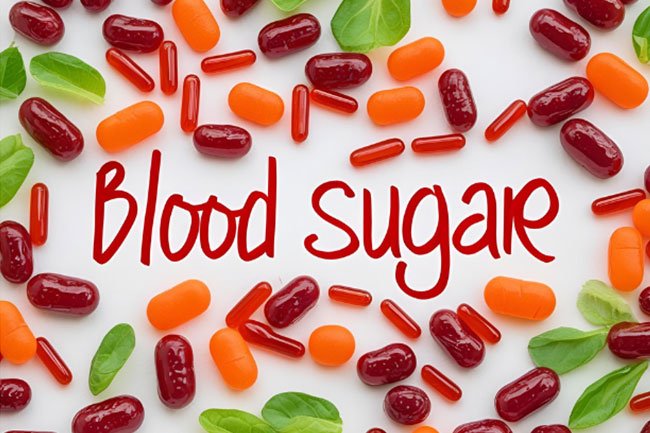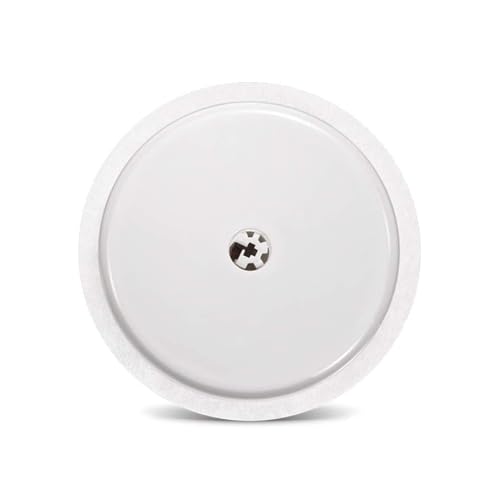Discover the secrets to mastering blood sugar management and boosting your energy. Explore tips on diet, supplements, exercise, and habit-building to support your health.
Ever hit that afternoon slump and wonder why you’re suddenly out of energy? You reach for coffee, sweets, or anything to boost your focus—only to feel the crash later. The culprit might surprise you: your blood sugar.
Blood sugar, or glucose, is your body and brain’s primary fuel, derived from the carbohydrates in your food. When your glucose levels are stable, you feel energized, focused, and productive. But when they spike and crash, the energy rollercoaster begins. Mastering your blood sugar means gaining control of your energy, creating healthy habits, and setting the foundation for long-term well-being.
What Is Blood Sugar and How Does It Work?
Think of blood sugar as your body’s fuel gauge. When you consume carbohydrates—whether it’s fruit, bread, or a sweet treat—they’re broken down into glucose, which enters your bloodstream as an energy source. Insulin, a hormone produced by the pancreas, acts like a delivery driver, ensuring glucose reaches your cells to power their functions.
When this system works smoothly, your blood sugar stays steady, and your body runs optimally. However, imbalances in this process can lead to energy highs and lows that disrupt your focus and mood.
The Energy Rollercoaster: Peaks and Crashes
Here’s where things get tricky. Foods high in refined carbohydrates or sugars can cause a rapid spike in blood sugar, creating a burst of energy and alertness. But this peak is short-lived. Your body responds by releasing a surge of insulin to manage the glucose, sometimes overshooting and leading to a sharp drop.
This crash leaves you feeling fatigued, irritable, and craving more sugar to regain energy—a vicious cycle that takes its toll on your body and mind.
The Danger Zone: Why Excess Sugar Can Be Harmful
Sugar isn’t just an energy disruptor; it can have serious long-term effects:
- The Energy Crash Cycle: Added sugars cause rapid spikes and crashes, leaving you drained and dependent on more sugar for energy.
- Weight Challenges: Excess sugar that isn’t used for energy is stored as fat, contributing to weight gain.
- Metabolic Disorders: Regular sugar spikes strain the body’s glucose-regulating system, increasing the risk of insulin resistance, Type 2 diabetes, and heart disease.
- Impact on Brain Health: High sugar intake is linked to cognitive decline, mood instability, and increased anxiety or depression.
When to Use Sugar (And How to Do It Wisely)
Sugar isn’t inherently bad—it’s about how and when you use it. Here’s how to make smarter choices:
- For Immediate Energy Needs: Sugar can be helpful during intense physical activity, such as a workout or sports event, when your body needs quick fuel. Pair it with hydration to avoid a crash.
- Occasional Treats: Enjoy sweets in moderation. Treat them as an indulgence rather than a daily staple.
- Balance It Out: Pair sugary foods with fiber, protein, or healthy fats to slow down glucose absorption. For example, combine dark chocolate with almonds.
- Avoid Liquid Sugars: Beverages like sodas and juices cause rapid sugar spikes. Opt for whole fruits instead—they offer natural sugars alongside fiber and vitamins.
Why Stable Blood Sugar Is Your Secret Weapon
Keeping your blood sugar stable goes beyond avoiding energy crashes—it’s a cornerstone of overall health. Here’s what it can do for you:
- Consistent Energy: Say goodbye to dramatic highs and lows.
- Improved Mood: Stable blood sugar supports neurotransmitter balance, reducing mood swings.
- Sharper Focus: A steady glucose supply enhances cognitive function and concentration.
- Reduced Cravings: Avoiding spikes and crashes means fewer intense cravings for sugary foods.
- Long-Term Health Benefits: Maintaining steady blood sugar reduces the risk of chronic conditions like Type 2 diabetes and supports metabolic health.
Why Older Adults Should Be Especially Careful with Sugar
As we age, our bodies undergo changes that make managing blood sugar even more important:
- Slower Metabolism: Older adults often have a slower metabolism, making it harder for the body to process excess sugar efficiently.
- Increased Risk of Type 2 Diabetes: Aging is a major risk factor for Type 2 diabetes, and monitoring sugar intake can help reduce the risk.
- Impact on Cognitive Health: High sugar intake has been linked to memory decline and an increased risk of dementia in older adults.
- Bone and Muscle Health: Excess sugar can interfere with calcium absorption, which is vital for maintaining strong bones and muscles as we age.
- Energy Stability: Older adults may be more sensitive to blood sugar fluctuations, leading to fatigue, irritability, or weakness.
Simple Tips for Older Adults:
- Focus on low-glycemic foods like whole grains, vegetables, and lean proteins.
- Pair carbohydrates with protein and healthy fats to slow sugar absorption.
- Stay physically active with regular walks or low-impact exercises to help regulate blood sugar levels.
- Use tools like glucometers for occasional blood sugar monitoring.
Foods, Supplements, and Exercise for Blood Sugar Stability
Combining nutrient-dense foods, targeted supplements, and physical activity is essential for keeping blood sugar levels stable.
Best Foods to Support Blood Sugar Stability
- Non-Starchy Vegetables: Spinach, broccoli, kale, peppers. Packed with fiber and low in carbs, they prevent sugar spikes.
- Whole Grains: Brown rice, quinoa, oats. High in fiber, they digest slowly for gradual glucose release.
- Lean Proteins: Chicken, turkey, fish, tofu. Protein has minimal impact on blood sugar and curbs cravings.
- Healthy Fats: Avocado, nuts, olive oil. Fats slow digestion, promoting steady glucose levels.
- Low-Glycemic Fruits: Berries, apples, oranges. Natural sugars paired with fiber slow absorption.
- Fermented Foods: Yogurt, kimchi, sauerkraut. Probiotics support gut health, which influences blood sugar regulation.
Proven Supplements for Blood Sugar Stability
- Chromium: Enhances insulin function and regulates glucose metabolism. [View on Amazon]
- Magnesium: Improves insulin sensitivity and supports glucose control. [View on Amazon]
- Cinnamon: May lower fasting blood sugar and improve insulin sensitivity. [View on Amazon]
- Vitamin D: Supports glucose regulation and overall metabolic health. [View on Amazon]
Exercise: A Natural Blood Sugar Balancer
Physical activity plays a crucial role:
- Strength Training: Building muscle increases glucose utilization and keeps levels stable over time.
- Aerobic Exercise: Walking, jogging, and cycling improve insulin sensitivity and support glucose management.
- Post-Meal Movement: Even a simple 10-minute walk after meals can lower blood sugar spikes and improve digestion.
Monitoring Your Blood Sugar: A Key to Mastery
Understanding your blood sugar levels is an essential part of managing energy, building habits, and improving long-term health. Here’s how to approach it:
Ways to Monitor Blood Sugar
- Traditional Blood Glucose Meters (BGMs): A quick finger-prick test provides instant readings—ideal for people with diabetes or specific blood sugar goals. [View on Amazon]
- Continuous Glucose Monitors (CGMs): A small sensor worn on the skin offers real-time insights, great for tracking patterns over days. [View on Amazon]
- Observing Symptoms: Fatigue, shakiness, and cravings can signal imbalances. Keep a journal to log meals and corresponding energy levels.
Creating the Habit of Monitoring
- Set a Trigger: Pair monitoring with an existing habit, like checking levels before breakfast or after exercise.
- Track Progress: Use a digital app or log to record readings and observations.
- Experiment and Learn: Test different meals, exercises, and habits to find what works for you.
- Celebrate Improvements: Recognize small wins, like fewer cravings or steadier energy, to stay motivated.
Building Healthy Habits
Small changes build big results. Here’s how to create habits that stick:
- Start Small: Replace soda with sparkling water, or add vegetables to one meal each day. Gradual tweaks make habits sustainable.
- Anchor Habits to Your Routine: Pair changes with something you already do. For example, take a post-meal walk while calling a friend.
- Track Progress: Keep a habit tracker and celebrate streaks to stay motivated.
- Celebrate Wins: Reward yourself for consistency—whether it’s a new book, a favorite snack, or reflecting on your growth.
Take the First Step
Understanding the role of blood sugar in your energy is empowering. Whether you start with walking after meals, adding more vegetables to your plate, or tracking progress with a journal, every step makes a difference. Share your journey on EasyHabitHub and inspire others to master their energy and transform their health!
Complementary Tools for Blood Sugar Management
1. Fitness Trackers and Apps
- Tools like Fitbit, Garmin, or fitness apps can help readers track their physical activity, ensuring they meet movement goals like post-meal walks or daily exercise routines. [View on Amazon]
2. Blood Glucose Monitoring Devices
- For Casual Users: Devices like glucometers for finger-prick testing offer quick insights for anyone curious about their blood sugar. [View on Amazon]
- For Advanced Users: Continuous Glucose Monitors (CGMs) give real-time feedback, helping readers make informed decisions about meals and workouts. [View on Amazon]
3. Habit-Tracking Journals or Digital Apps
- Products like “The Habit Journal” or apps like Habitica and Strides encourage consistency in building healthier routines—whether it’s eating more vegetables, exercising, or monitoring energy levels. [View on Amazon]
4. Meal Planning Services and Tools
- Subscription services like meal kit providers or apps that help plan balanced, blood sugar-friendly meals tailored to busy lifestyles. [View on Amazon]
Note: This page contains affiliate links. If you make a purchase through these links, we may earn a small commission at no additional cost to you. Thank you for supporting our work!
- 【Advanced Motion Sensing】Non invasive glucose monitor: Equipped with a high-performance accelerometer, the sporty non-in…
- 【Quick and Easy Testing】Just insert your finger into the sensor, and the results will appear on the OLED screen in secon…
- 【Universal Fit】Featuring a smart spring mechanism, the device comfortably accommodates various finger sizes for users ag…
- Simple and Easy to use: The blood sugar monitor automatically prepares for measurement after inserting the test strip, s…
- Fast and Reliable Tests: This fast and accurate diabetes test kit requires only 0.7μL of blood sample and reads results …
- Code-free Test Strips: G-425 blood test strips only works with Glucoracy G-425 blood glucose monitor with code-free desi…
- 15 Days Smart Continuous Glucose Monitoring Sensor works with app and Transparent Self Adhesive Patch Sticker, Waterproo…













